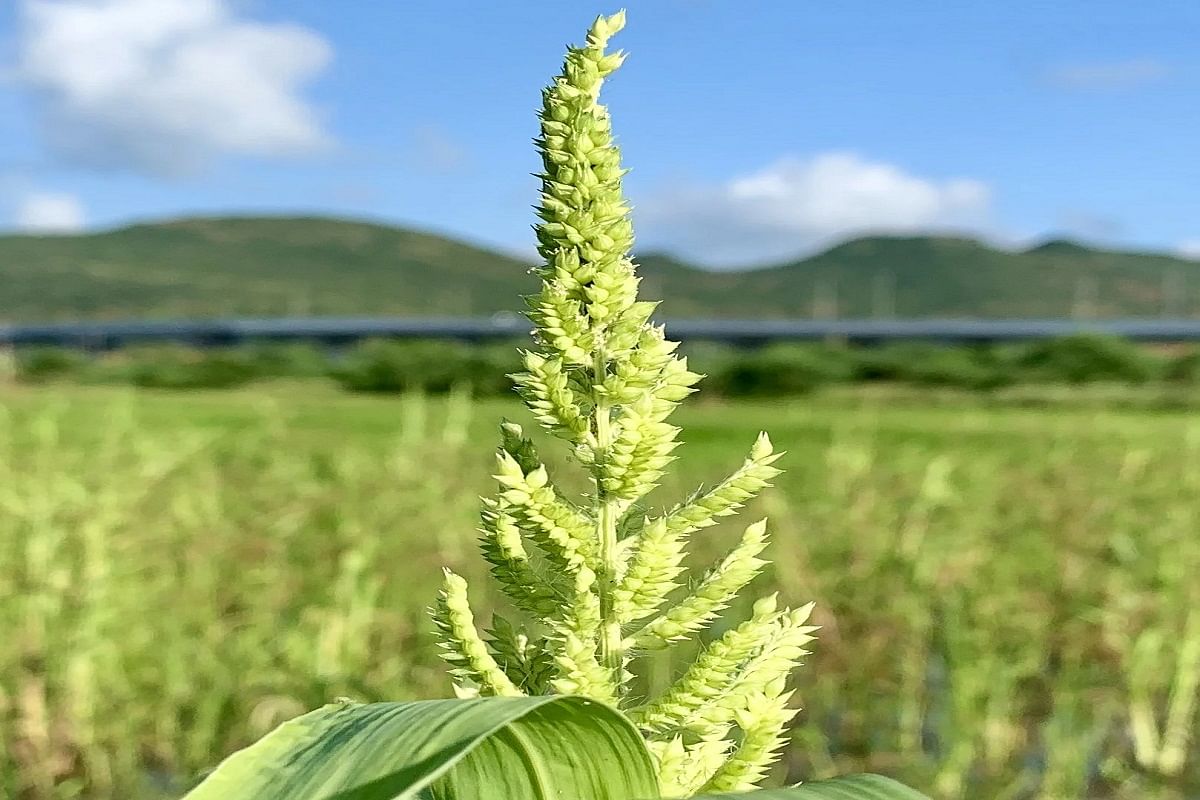
Barnyard millet is another food crop that is domesticated in India and is used for both grain and fodder. Japanese Barnyard Millet, Oodalu, Ooda, Sanwa, Sawan, and Sanwank are some of the other names for it. It is the best source of digestible protein, has a good balance of soluble and insoluble fiber, and is a good supply of dietary protein. Millets are a staple meal in many traditional cuisines across the world, especially in semiarid and arid climates. It can survive water logging situations in addition to being particularly drought resistant. Typically, it is cultivated as a rainfed crop.
Origin and History:
Barnyard millet is mentioned in ancient Indian literature. More than 2000 years have passed since it was first grown in China. Some researchers believe that central Asia is where barnyard millet most likely originated. Then from Central Asia, it spread to Europe and America.
Area Distribution:
In Malaysia, the East Indies, China, Japan, and India, barnyard millet is cultivated. When the rice harvest fails, it is said that it is produced as a replacement crop in China and Japan. Africa and the United States of America are somewhat affected by it as well. Madhya Pradesh, Uttar Pradesh, Tamil Nadu, Andhra Pradesh, Karnataka, Maharashtra, and Bihar are among the Indian states where it is cultivated.
Varieties Cultivated:
Various varieties with high-yielding potential have been released for different states. The list of a few popular varieties is given below:
|
SI. No. |
State |
Varieties |
|
1 |
Uttarakhand |
VL 172, VL 207, PRJ 1 and VL 29, PRS 1 |
|
2 |
Uttar Pradesh |
VL 172 and VL 207, Anurag, VL 29 |
|
3 |
Tamil Nadu |
CO 1 and CO 2, VL 181, VL 29 |
|
4 |
Karnataka |
VL 172, RAU 11, VL 181 |
|
5 |
Gujarat |
Gujarat Banti- 1 |
Season
-
Tamil Nadu: September –October (Rainfed) and February –March (Irrigated)
-
Uttaranchal and North Eastern States: April-May
-
Dry seeding before the onset of monsoon is practiced in hills
Crop Management:
Climate Requirements:
Barnyard millet is produced as a rain-fed crop since it can withstand drought. It can thrive in situations where there is some waterlogging. It is cultivated on the Himalayan slopes between sea level and 2000 meters above sea level. Barnyard millet can grow well in warm, somewhat humid climates. It is a resilient crop that can endure harsh weather conditions better than other grains.
Soil:
Barnyard millet is often grown on marginally fertile soils. It can be cultivated on soils that are partially saturated with water, such as low-lying areas along riverbanks, etc. Nevertheless, sandy loam to loam soil with a significant amount of organic matter is optimal for it. Poorly fertile, stony, and gravelly soils are unsuitable for growing a barnyard millet crop.
Field Preparation:
The land receives only a little amount of preliminary treatment because it is grown on very thin and marginal soils. The seedbed for barnyard millet just has to be prepared with two passes of a local plow, harrowing, and planking.
Seed and Sowing:
Barnyard millet can be seeded in the first two weeks of July when the monsoon season begins. At a rate of 8–10 kg per hectare, the seed is broadcast or drilled in furrows that are 3–4 centimeters deep. In a few locations in Maharashtra, transplants are also performed. It is best to seed it in rows that are 25 centimeters apart. It is disseminated and seeded in flood-affected areas with the first raindrops and picked before the flood occurrence.
Manures and Fertilizers:
Manures and Fertilizers: To increase production, apply farmyard manure or compost at a rate of 5 to 10 tonnes per hectare. 40 kilogram of nitrogen, 30 kg of P2O5, and 50 kg of potassium can be added to it per acre. During planting, all of the fertilizer should be incorporated into the soil. After 25–30 days of planting and if irrigation facilities are available, half of the nitrogen should be top-dressed in standing crops.
Water management:
In general, irrigation is not necessary for barnyard millet. However, if a prolonged dry spell occurs, one irrigation must be administered at the panicle start stage. It is usually preferable to drain the field of extra water after a heavy storm.
Up to 25 to 30 days after seeding, the land should be weed-free. The weeds in the barnyard millet field can be controlled with just two weedings. With a line-sown crop, weeding can be done using a hand or wheel hoe.
Diseases and Pests Management:
The crop is affected by various pests and diseases including downy mildew, smut, and rust. Pest infestation can also be seen at various intervals such as shoofly and stem borer.
Harvesting:
The crop needs to be picked when it is fully mature. Before threshing, it is chopped with sickles from the ground level and placed in the field for roughly a week. Bullocks' feet are used to stomp the grain during the threshing process.
Yields:
Grain yields typically range from 400 to 600 kg per hectare, whereas fodder or straw yields hover around 1200 kg per hectare. It is feasible to harvest 10–12 quintals of grain per hectare using an upgraded set of techniques.










